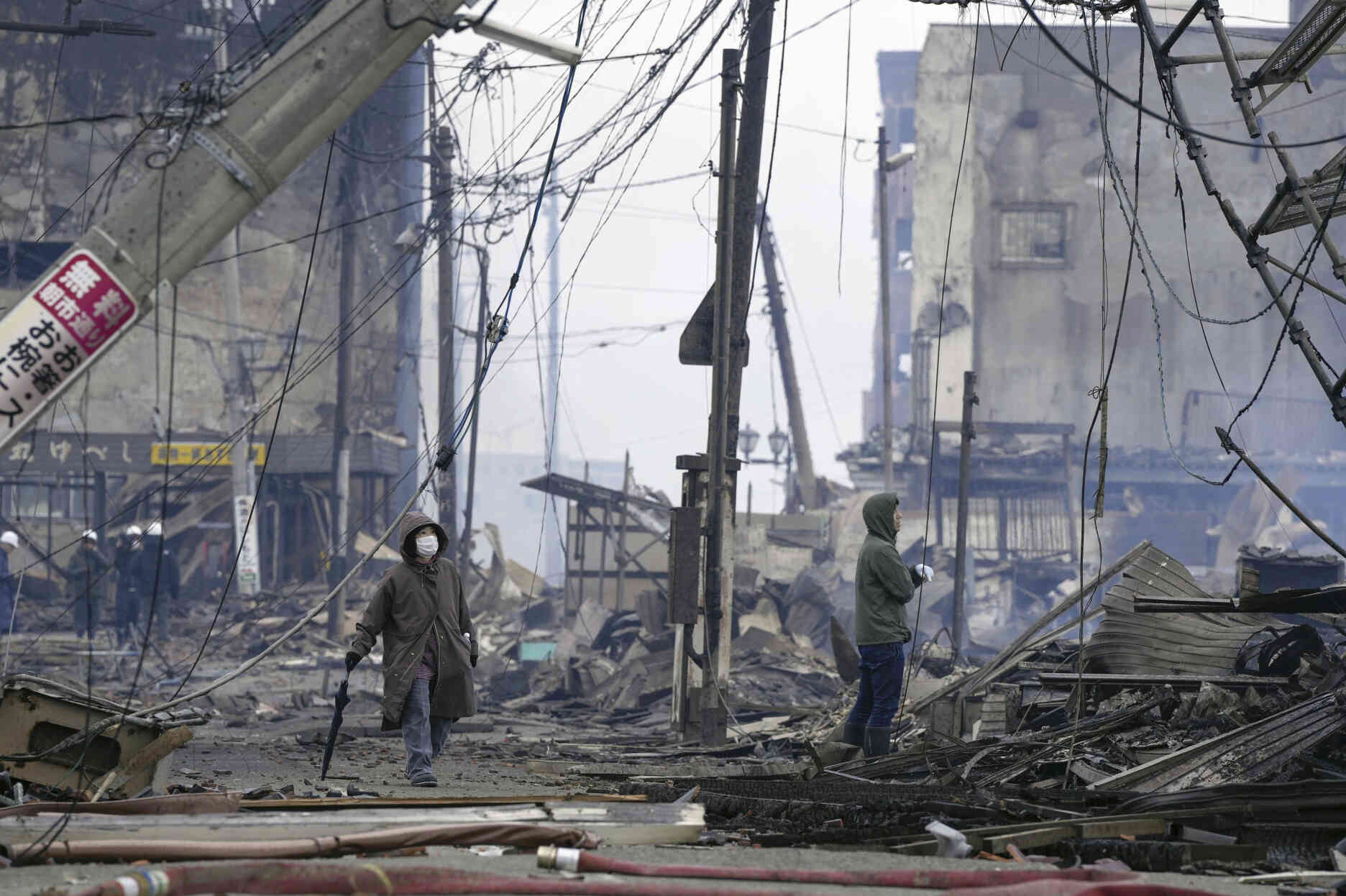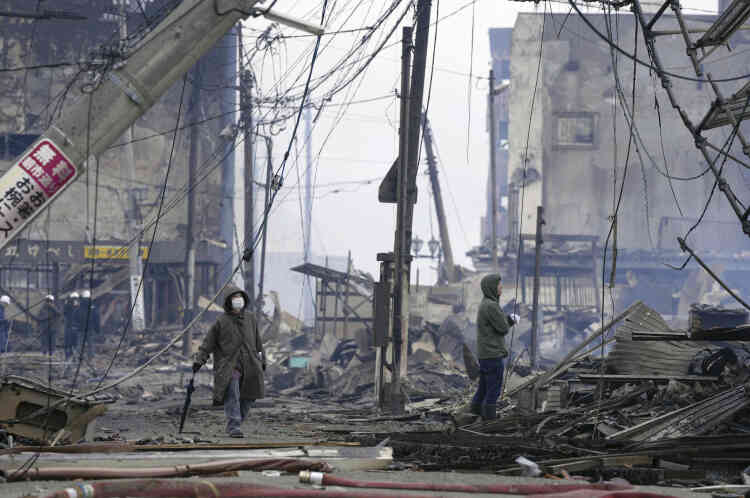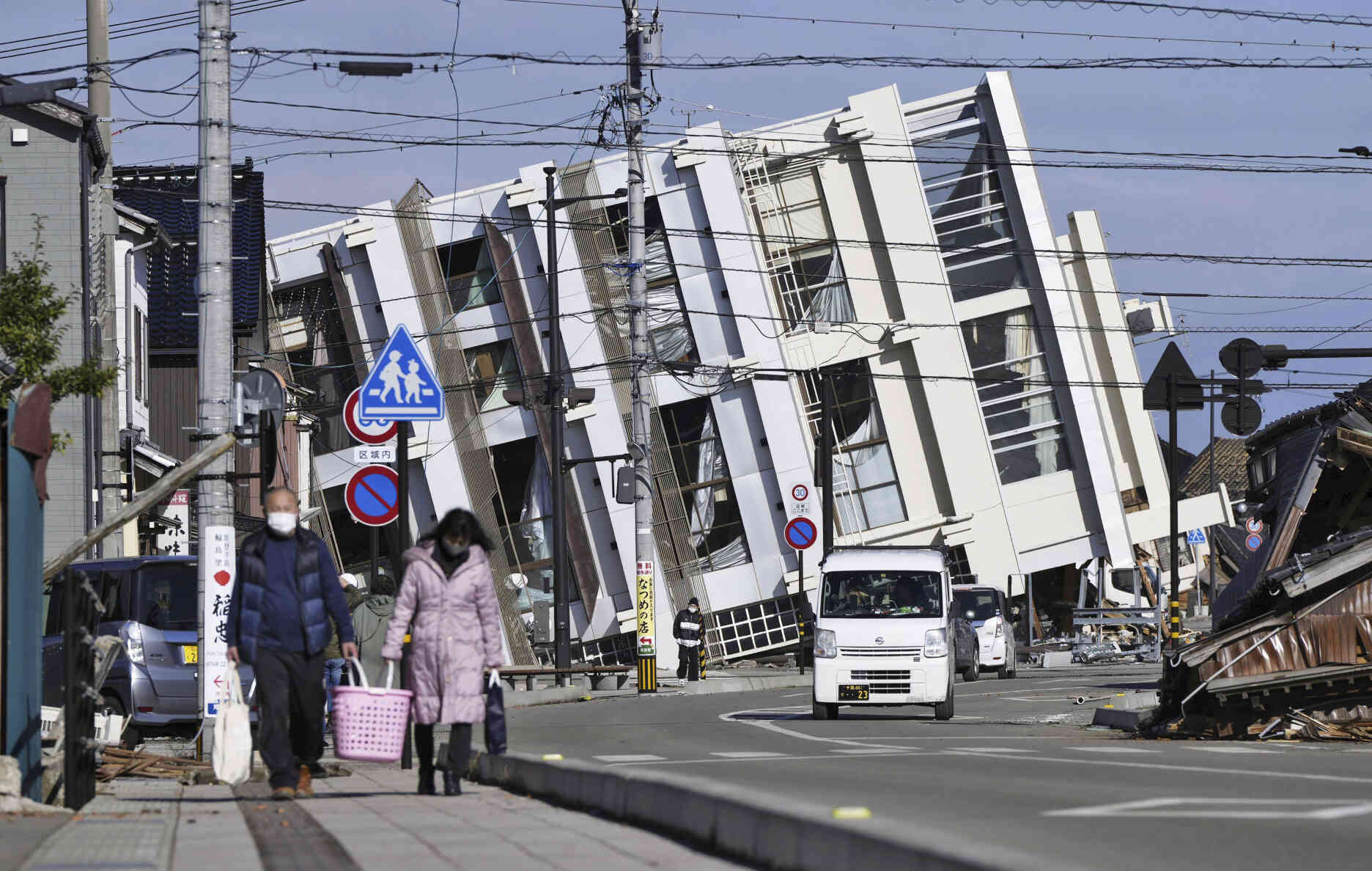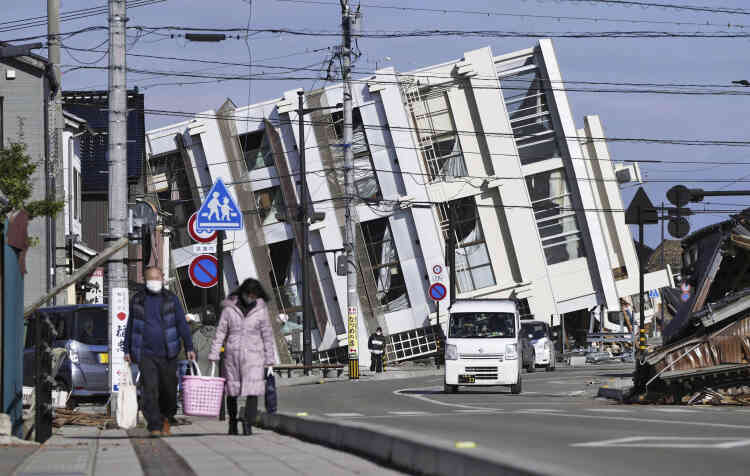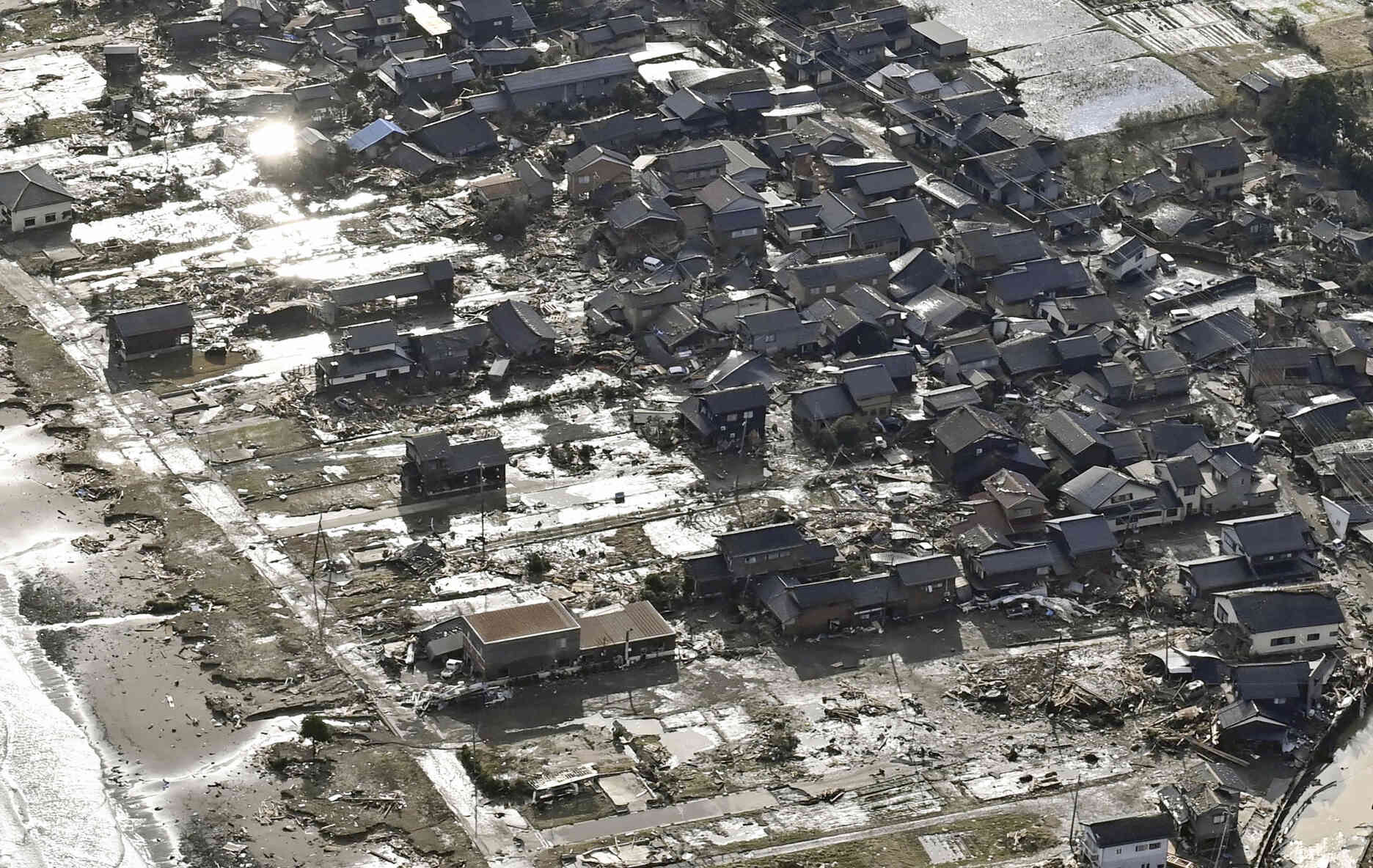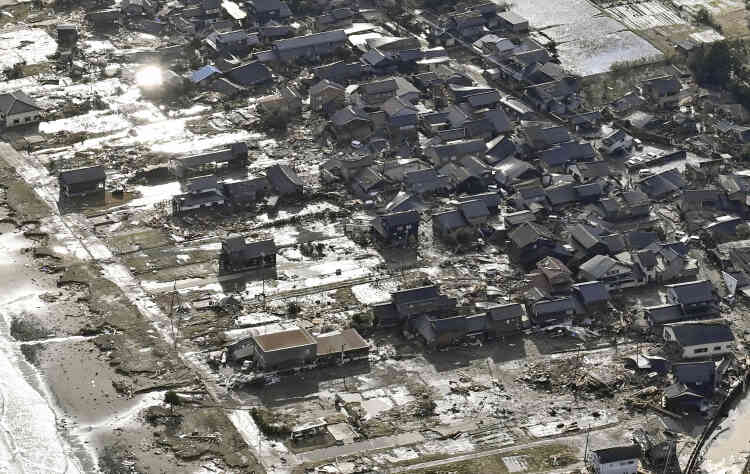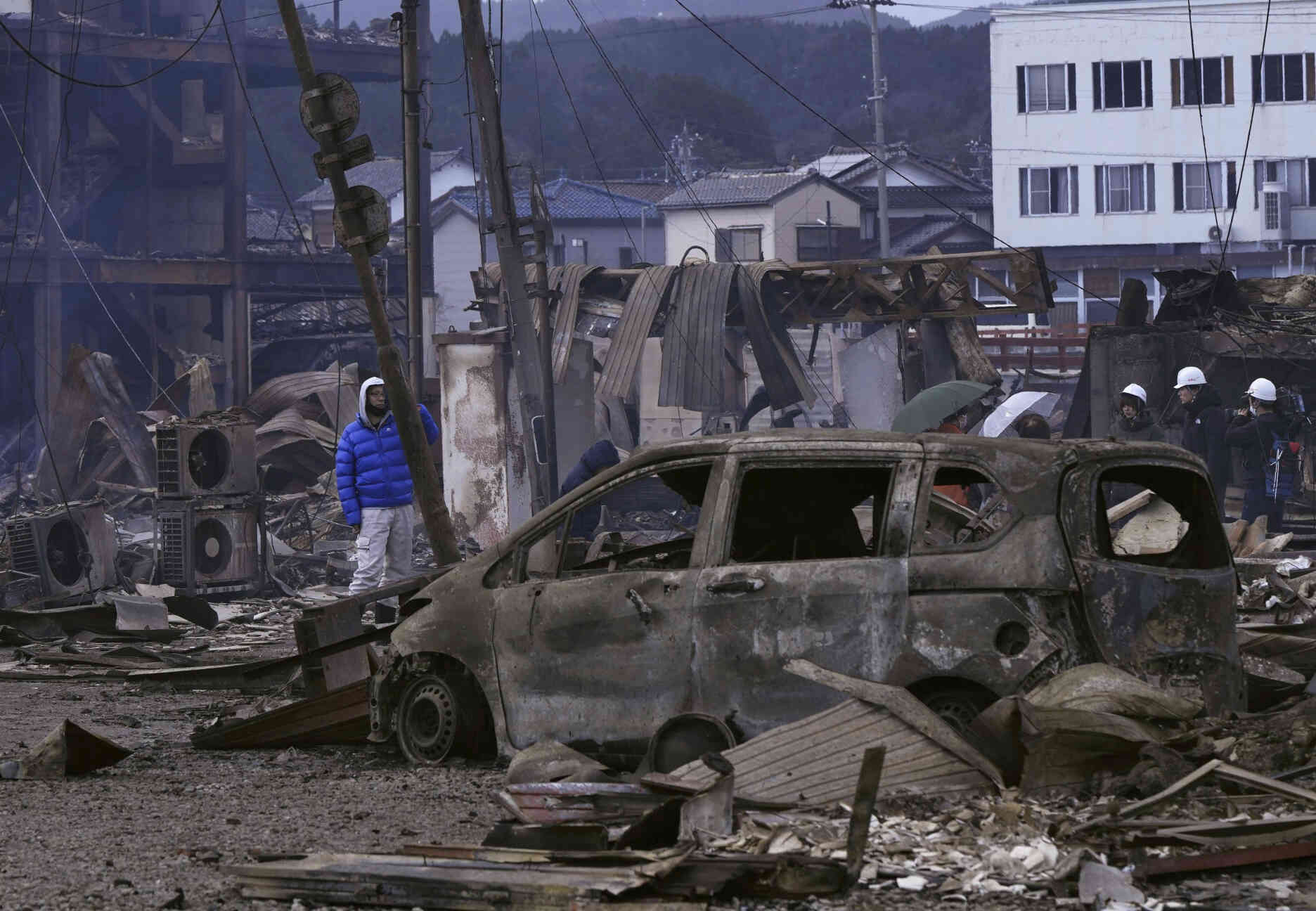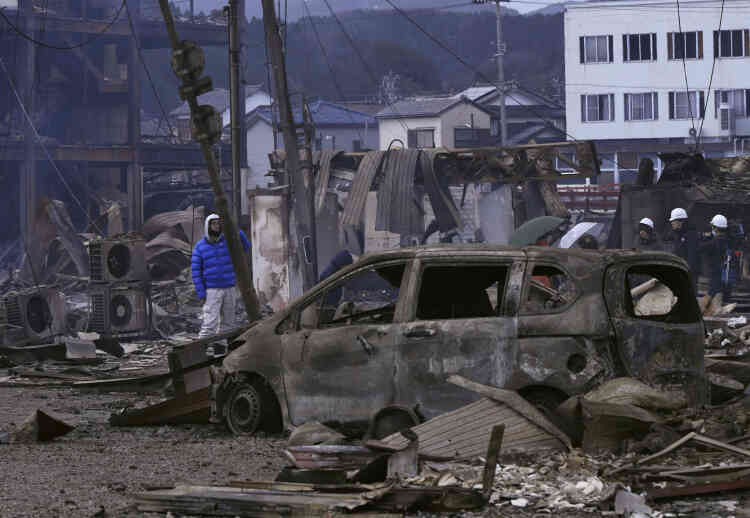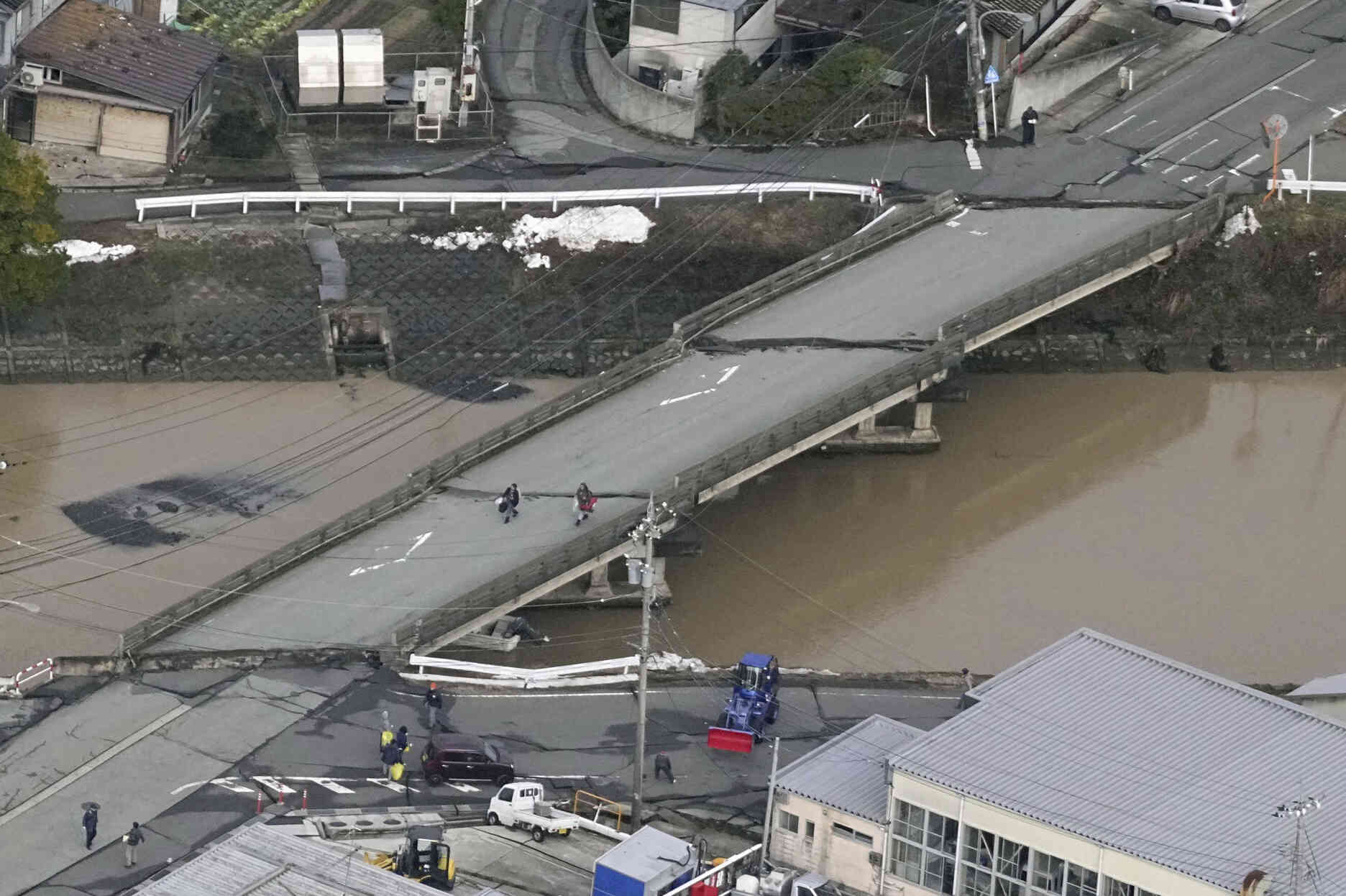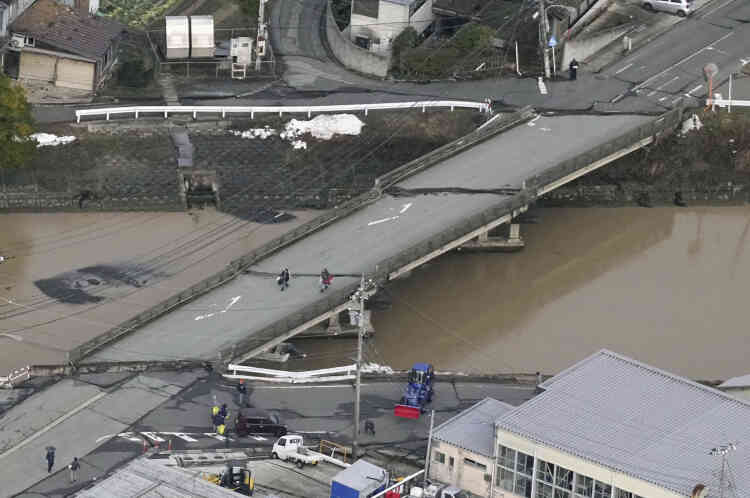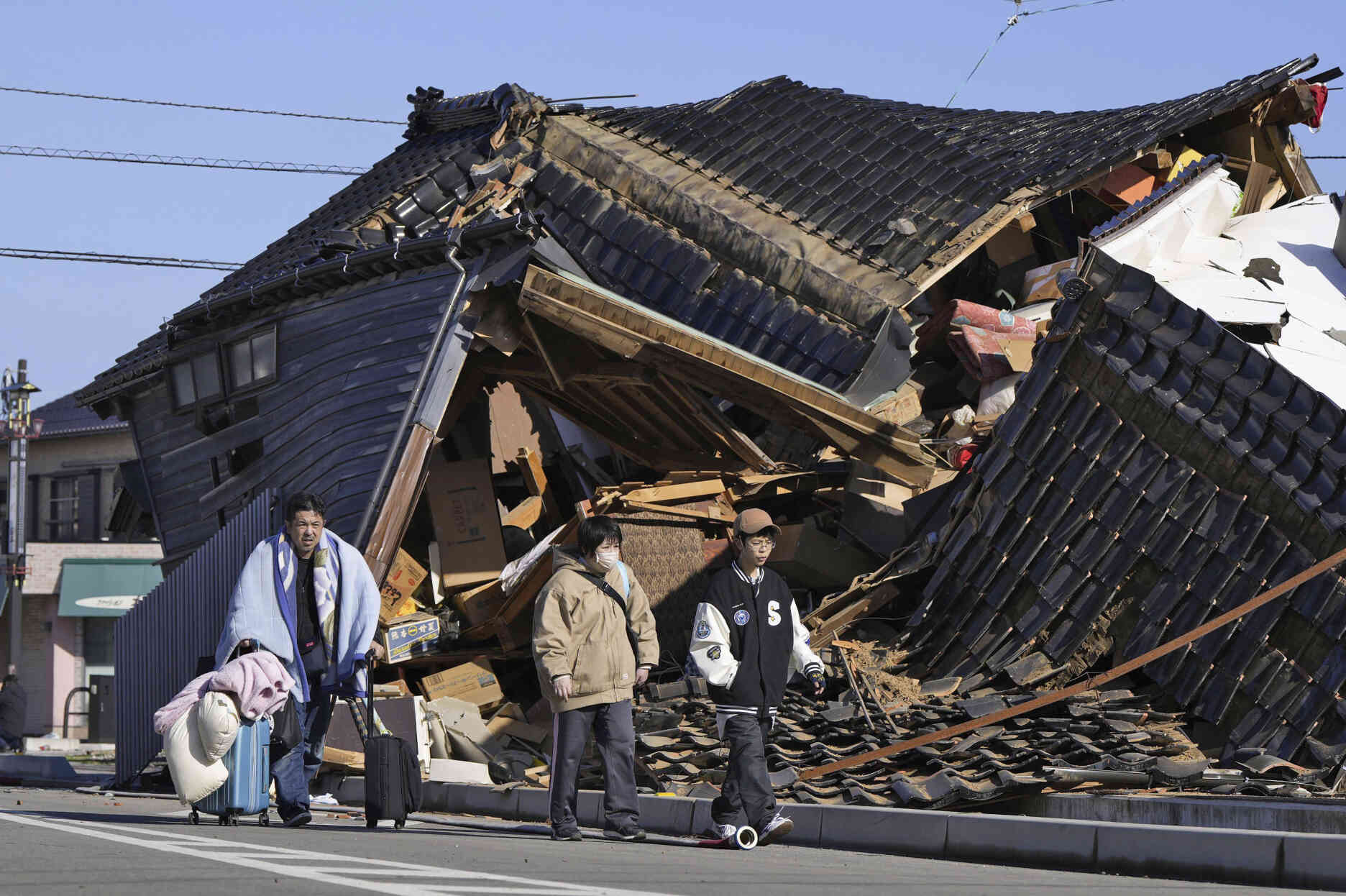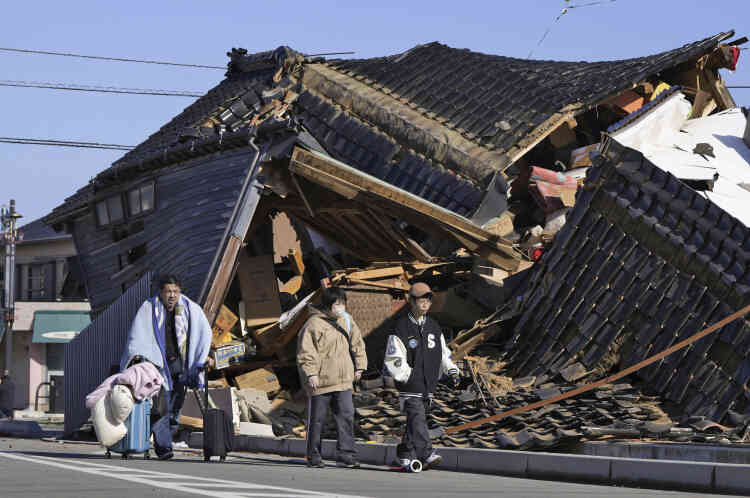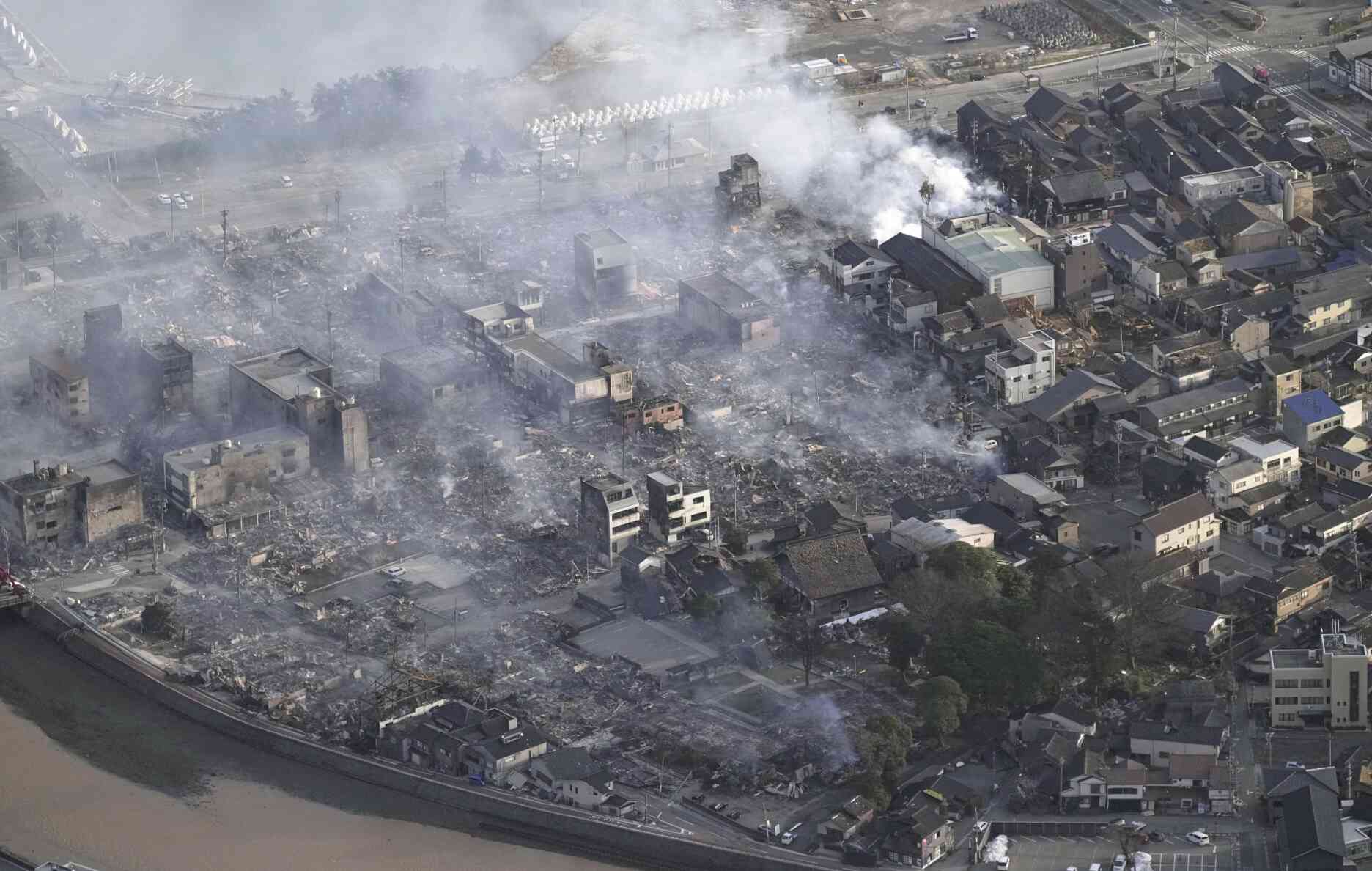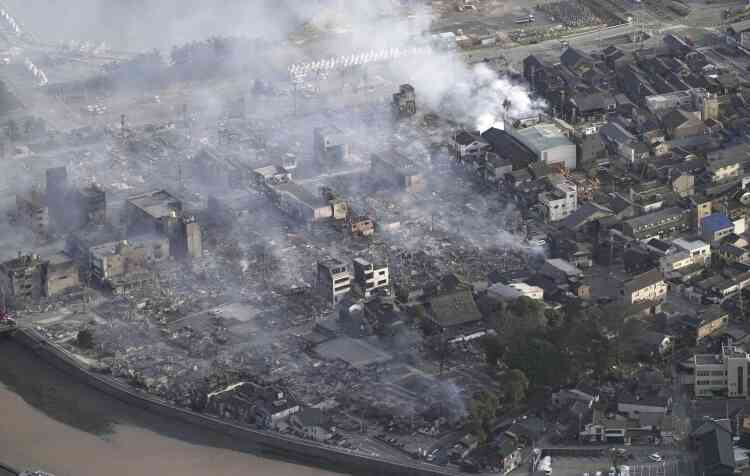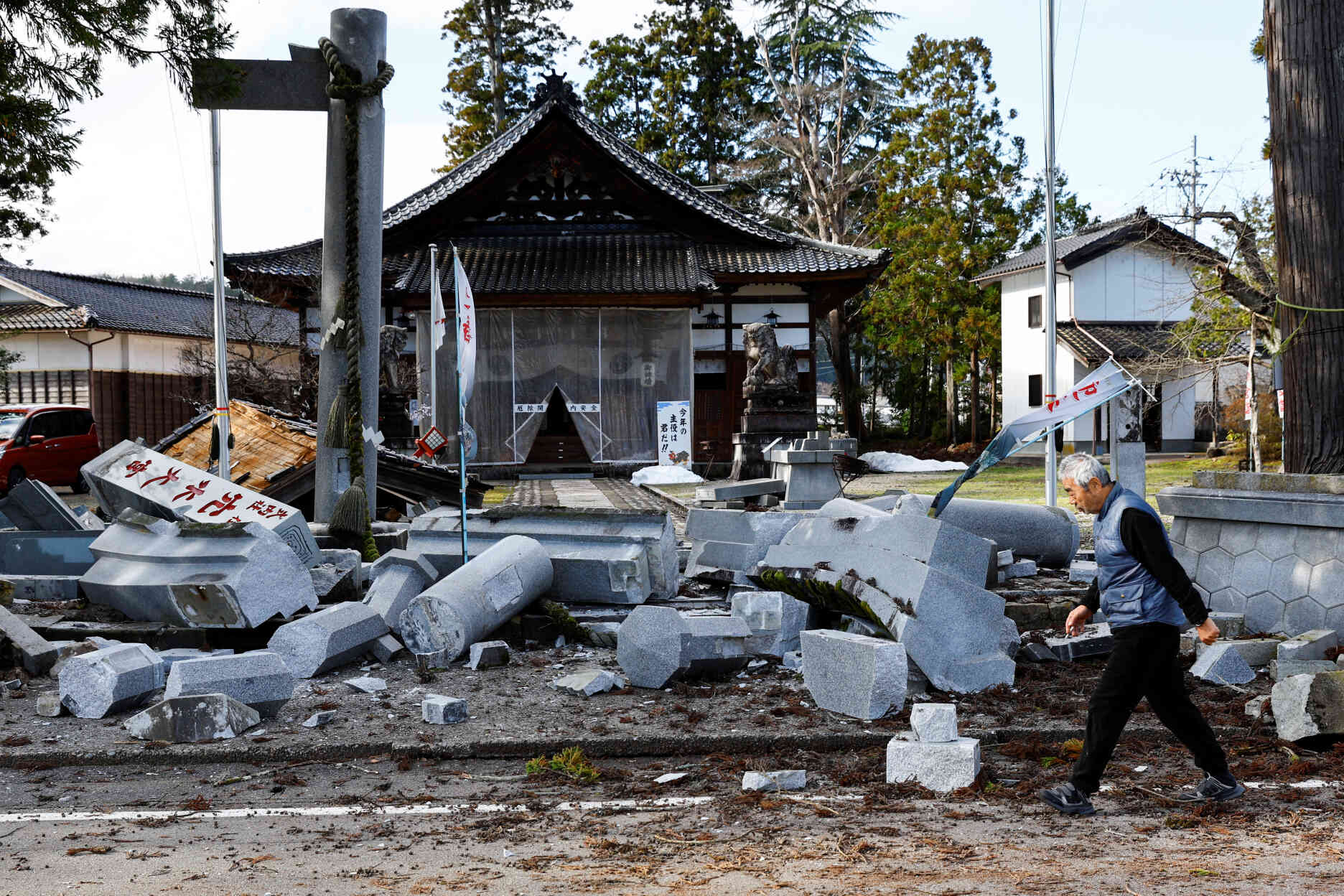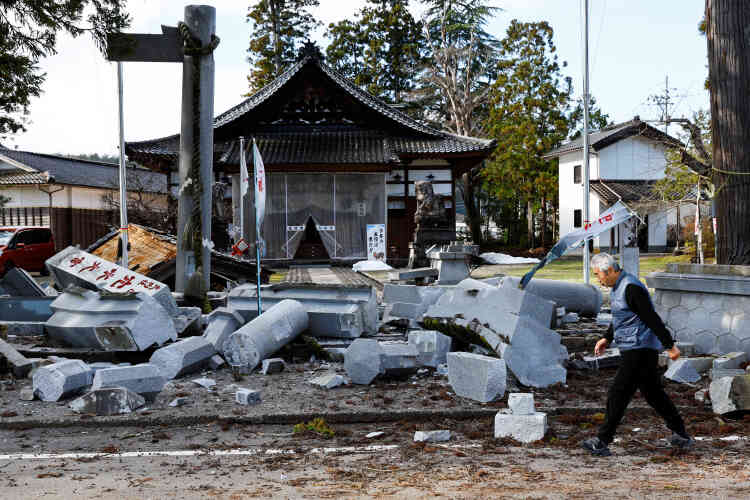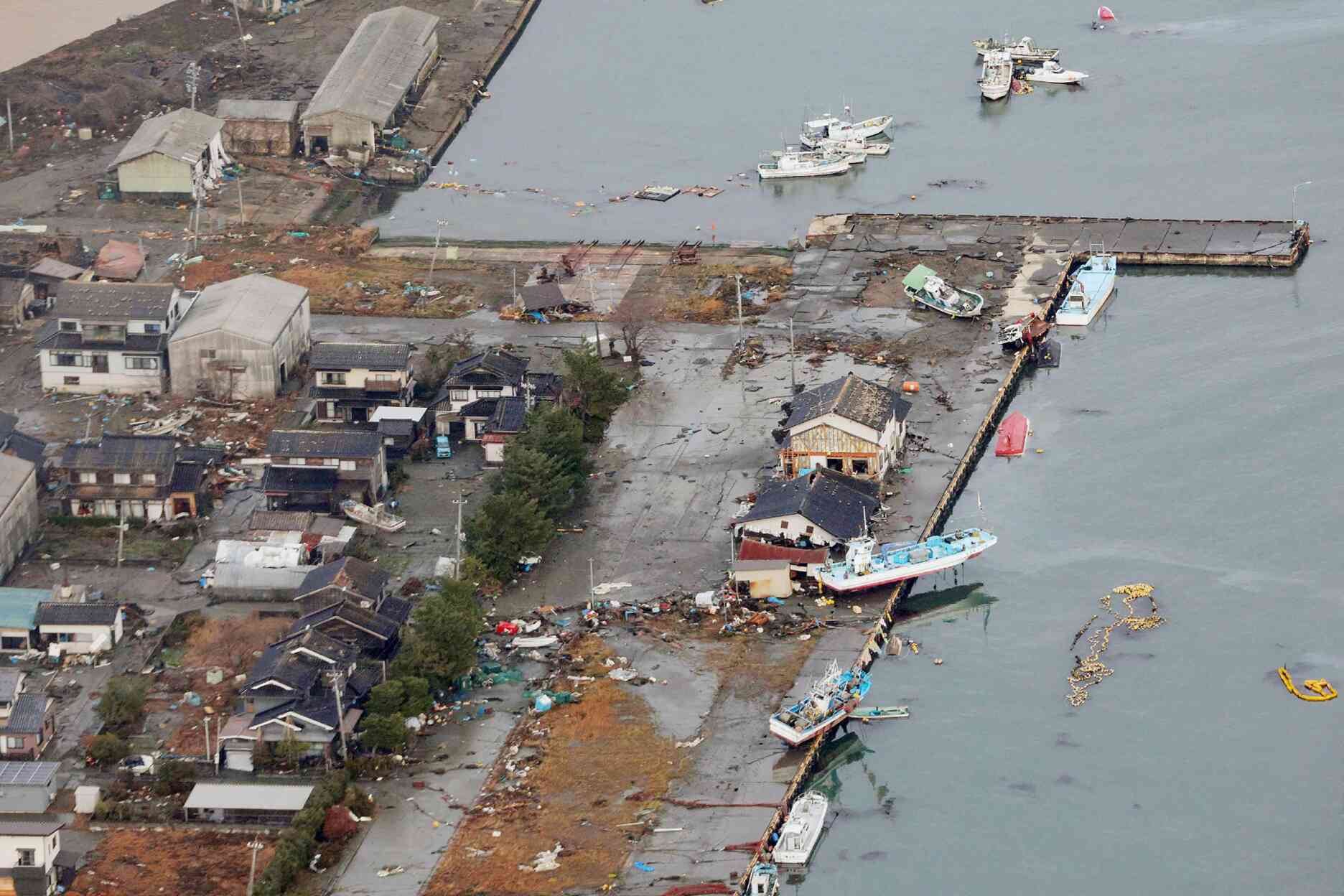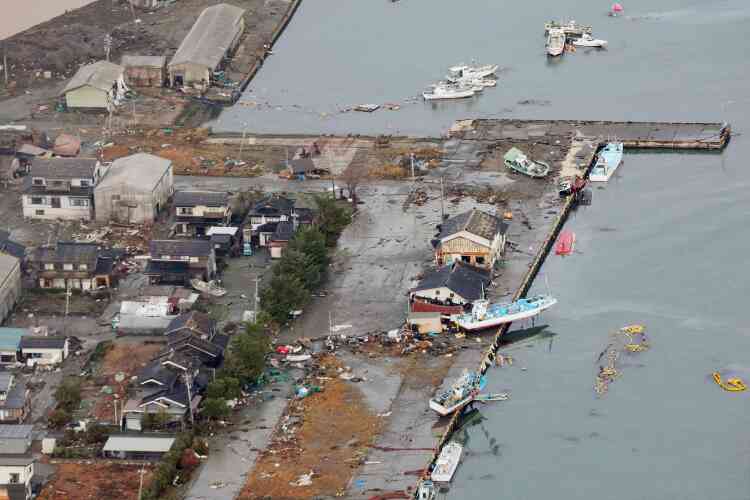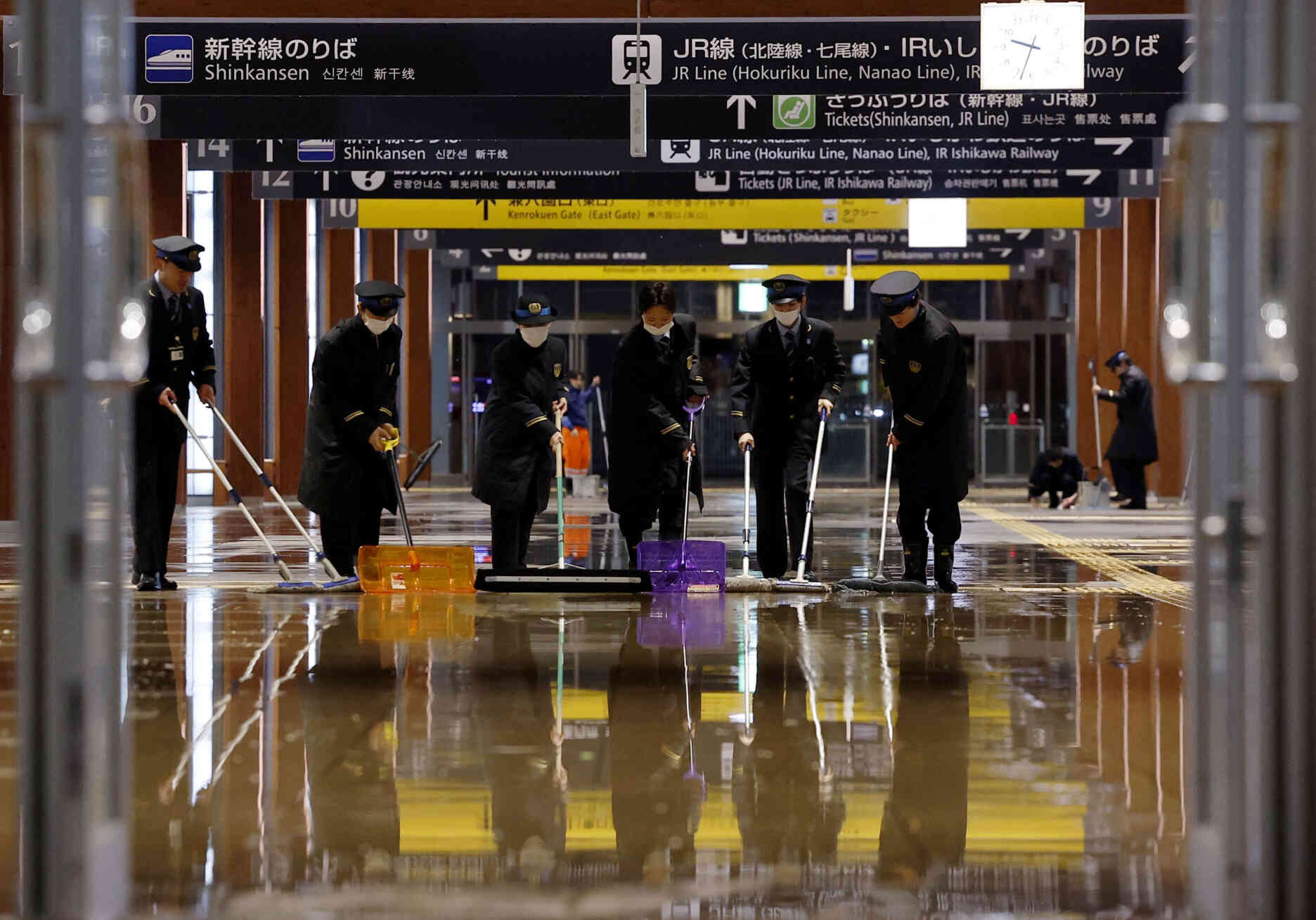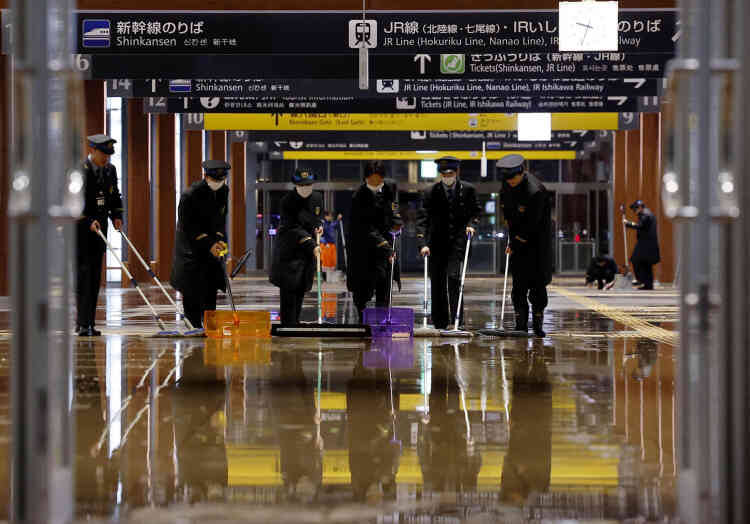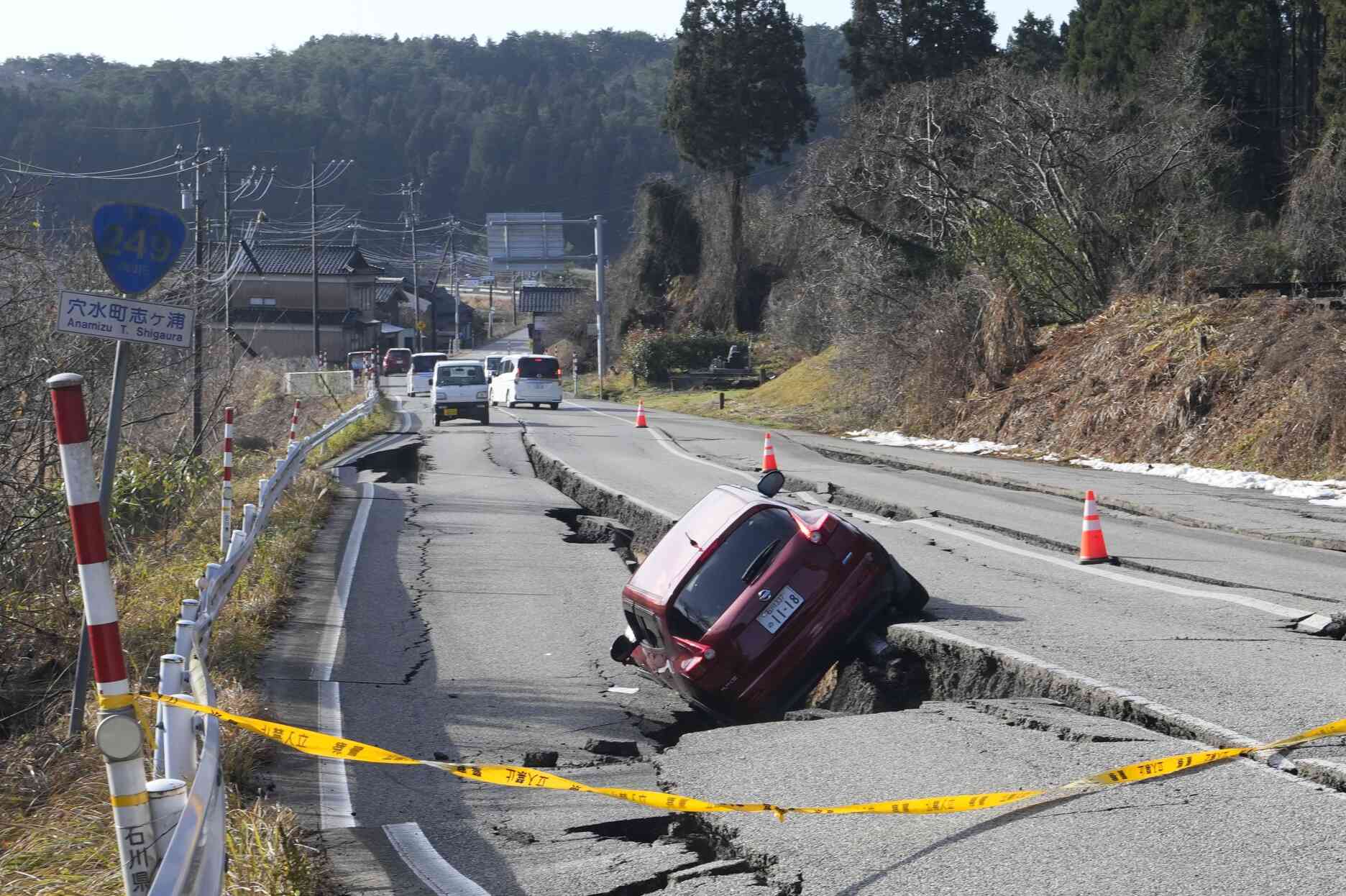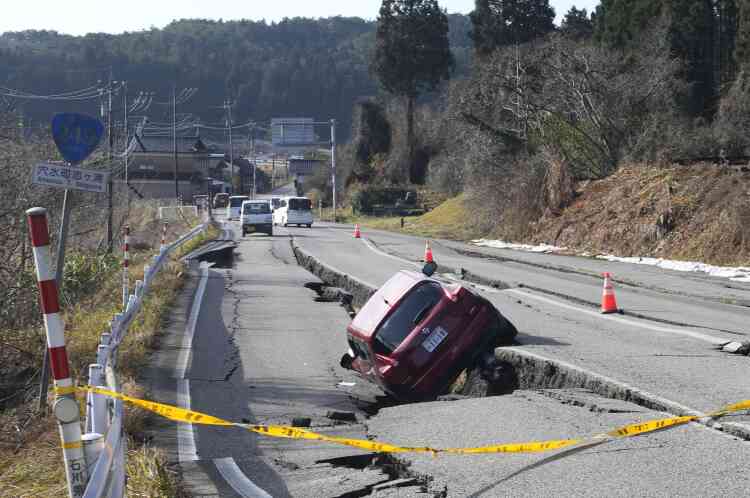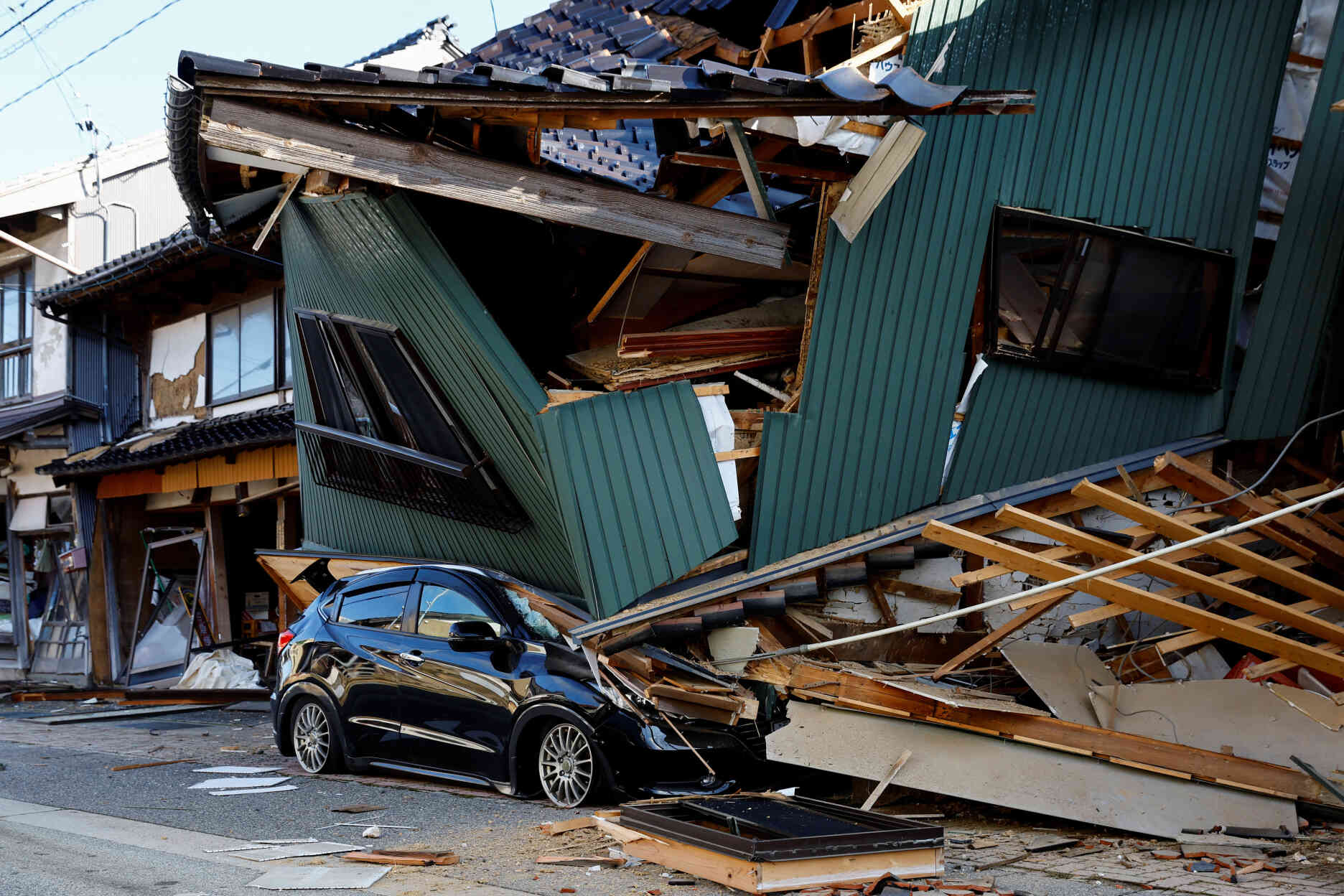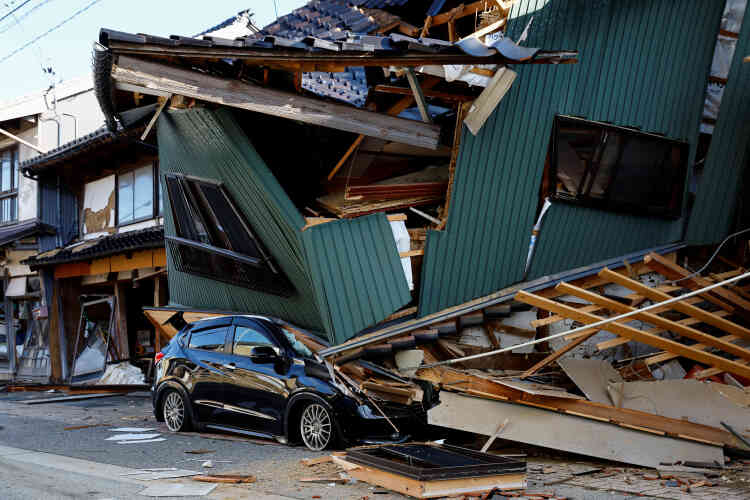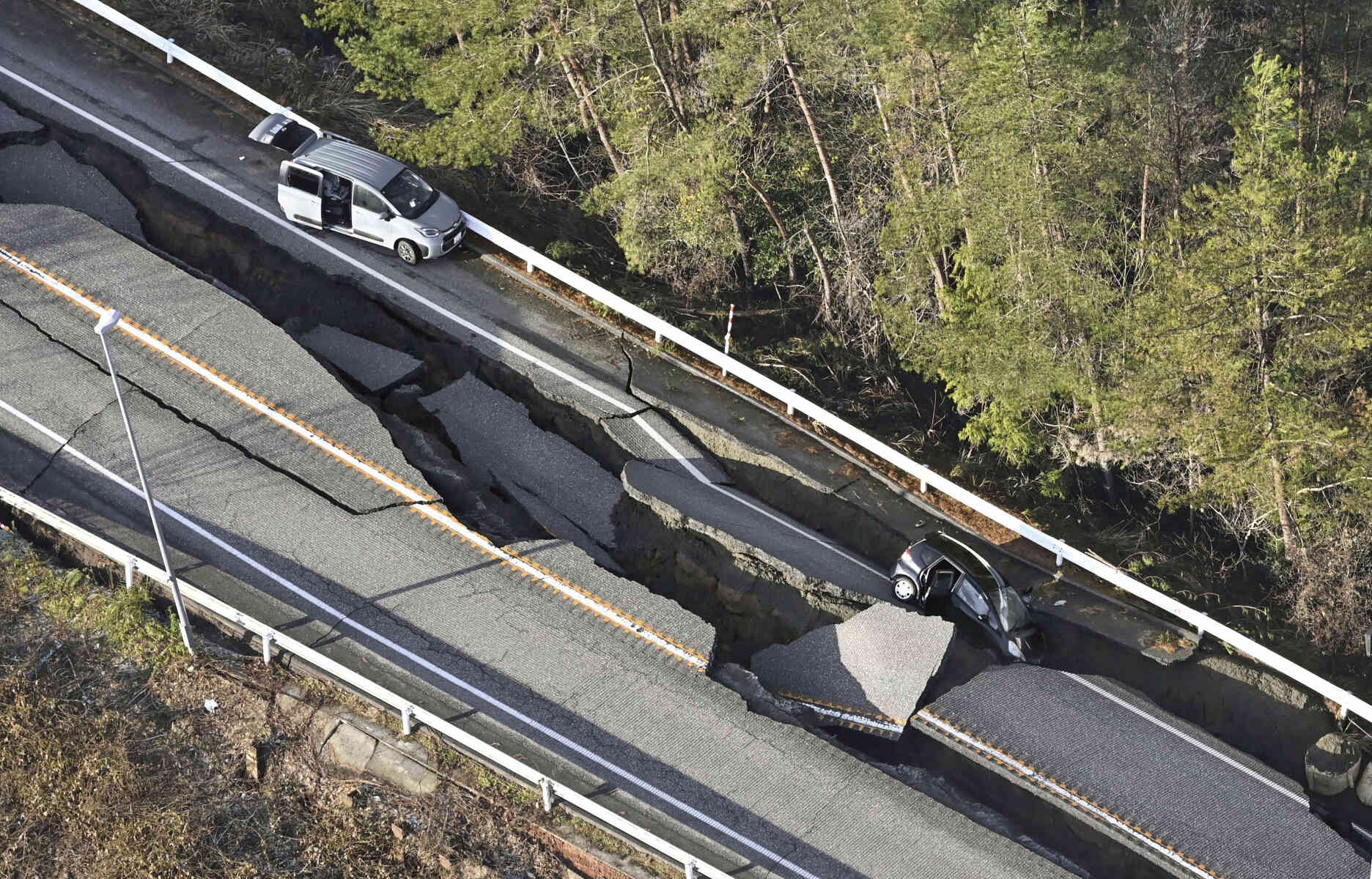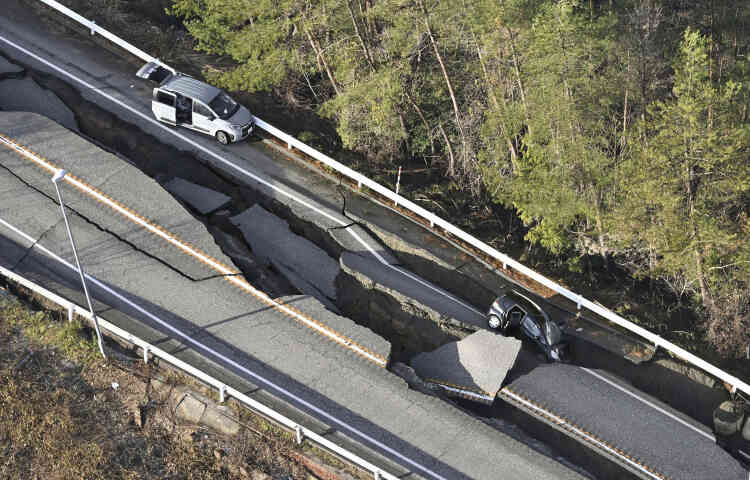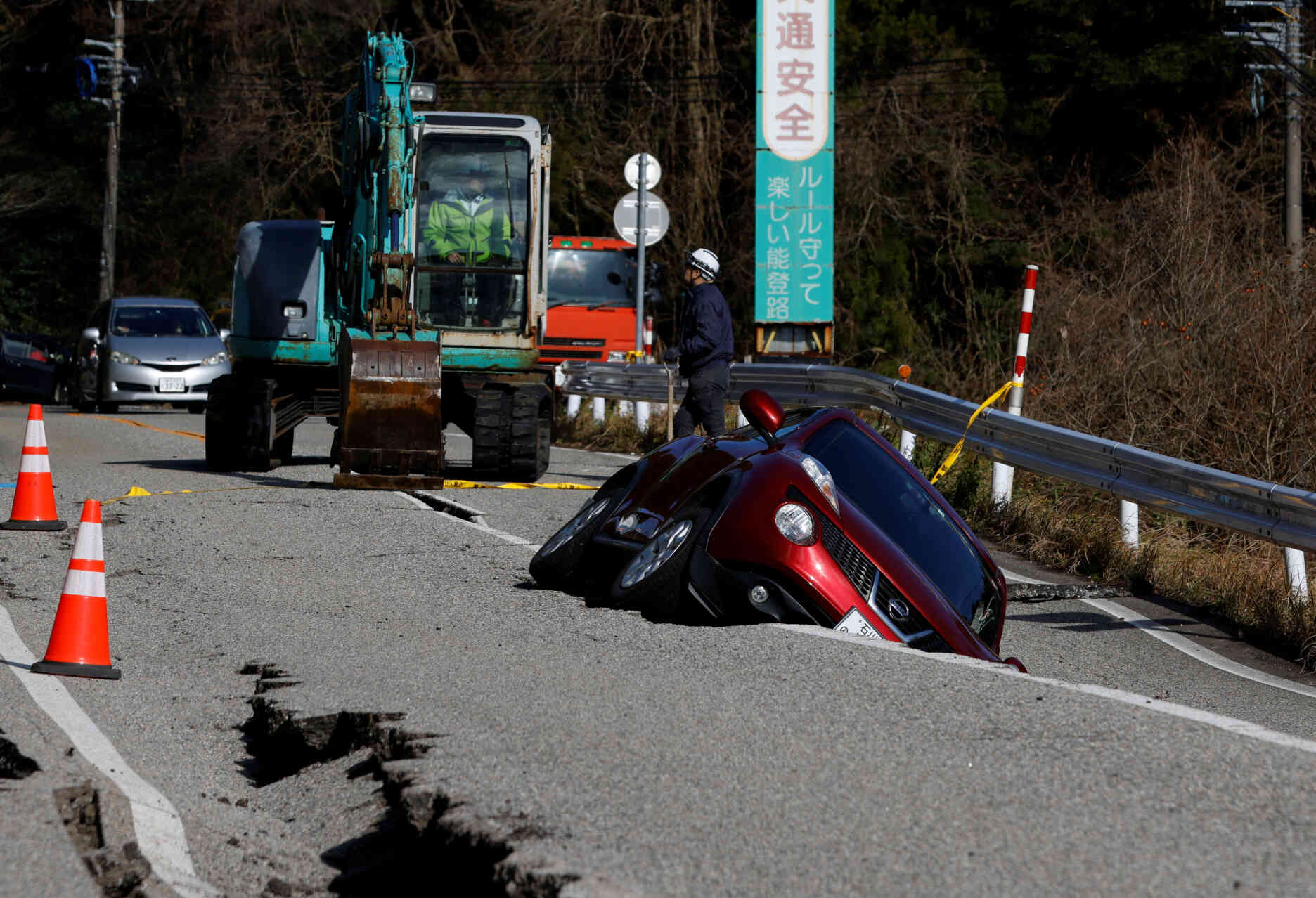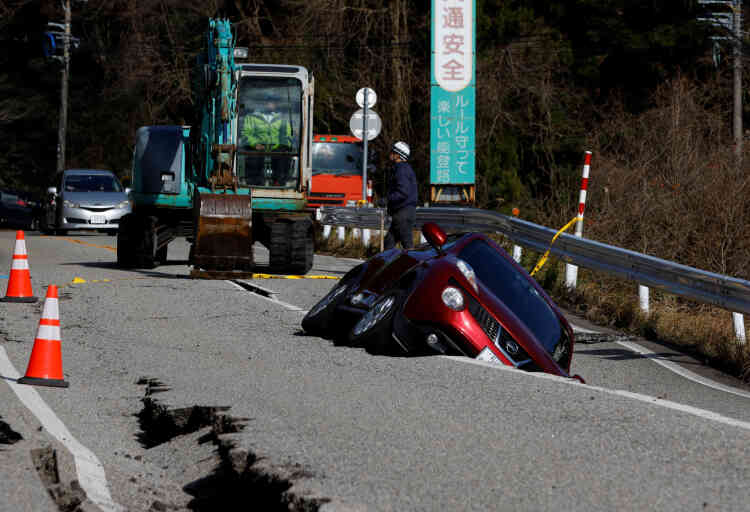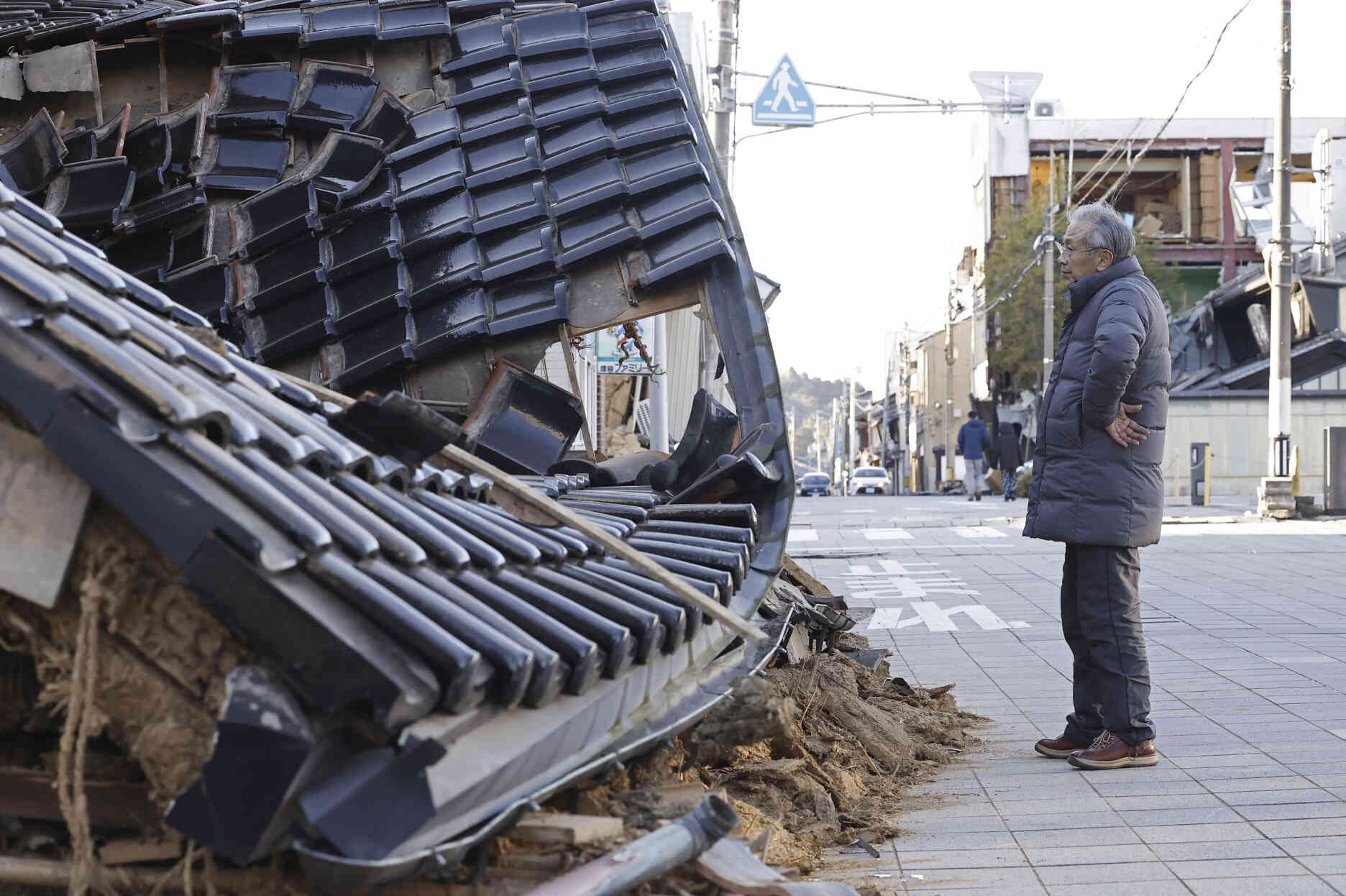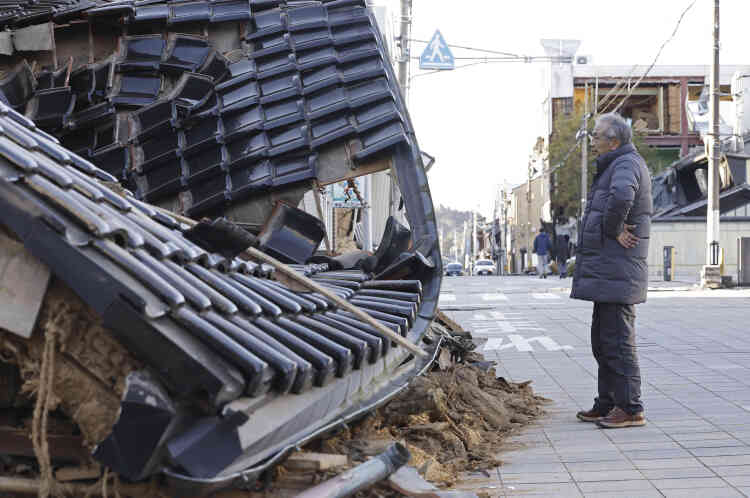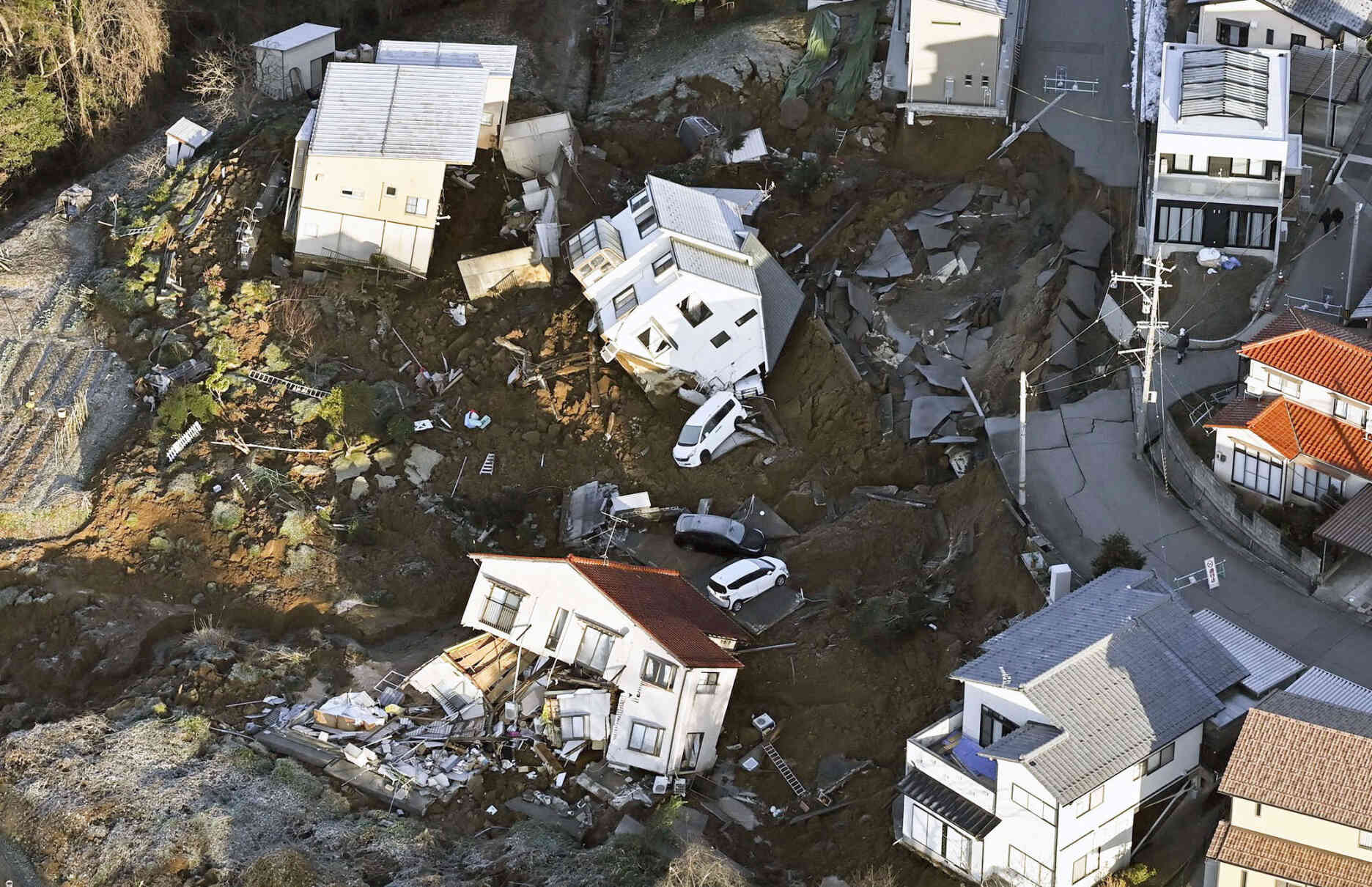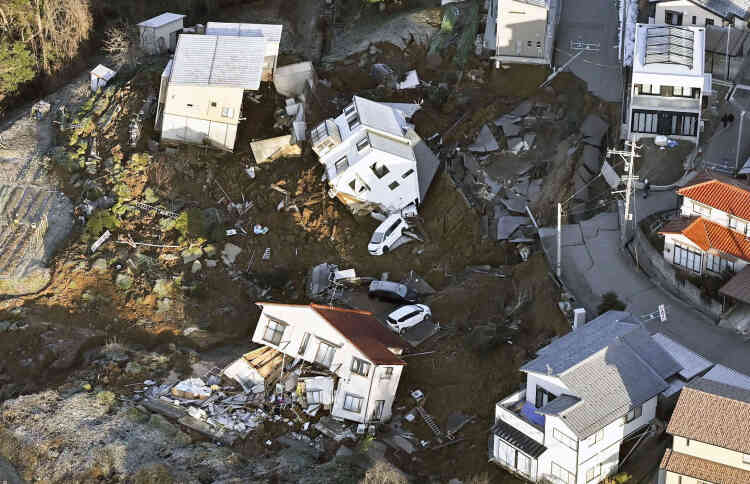The number of those missing in the powerful New Year’s earthquake in central Japan was revised significantly upwards by local authorities, to reach 323 people, triple the previous toll, they announced on Monday January 8 after- noon. So far, the number of missing people was 103 people, 168 dead and 565 injured.
The majority of people whose relatives have not been heard from were reported in the town of Wajima, one of the hardest hit by the 7.5 magnitude earthquake on the Noto Peninsula on the Sea of Japan.
The city was notably the scene of serious fires. The earthquake, followed by hundreds of aftershocks, caused thousands of landslides and the collapse of buildings and roads throughout the region. It also triggered a tsunami with waves more than 1 meter high on the coast of the Noto peninsula, a narrow strip of land about a hundred kilometers long. The tremor was felt as far away as Tokyo, 300 kilometers away.

Search continues despite difficult weather
On Monday, the thousands of rescuers from all over Japan, who continued to explore the rubble in search of bodies, had to deal with the snow which fell on the Noto peninsula, depositing in layers of more than 10 centimeters in places, and temperatures not exceeding 4°C.
“For all those waiting for help under the rubble and for their families, please do not give up your efforts”asked Prime Minister Fumio Kishida during a meeting on Monday, quoted by the FNN television channel.
Further landslides due to rainfall are feared, and icy conditions are expected to make traffic on roads damaged by the earthquake difficult, authorities have warned.
The emergency services are also continuing their efforts to reach more than 2,000 people, sometimes in critical situations, isolated due to roads damaged by the earthquake, and to deliver them food and equipment.
Ishikawa Prefecture Governor Hiroshi Hase told public broadcaster NHK that it was necessary “at all costs prevent deaths” among the refugees from the disaster, while some 29,000 people were sheltered on Sunday in 404 government shelters.
The World Application
The Morning of the World
Every morning, find our selection of 20 articles not to be missed
Download the app
“Providing people with the minimum amount of humanitarian aid so they can survive is a challenge”explained, on the TV Asahi channel, Hisayoshi Kondo, at the head of a medical assistance team dispatched to the site, estimating that, “in isolated areas, the supply of water and food is still insufficient”.
Critical health situation in shelters
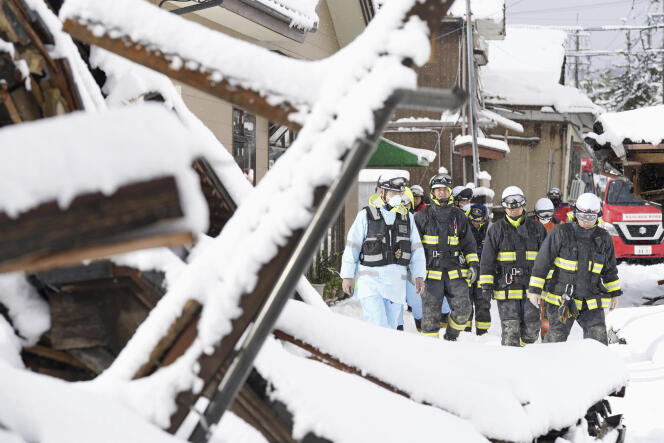
But, because of the difficult access to the places where the inhabitants have taken refuge, even “sending relief materials from across the country does not solve the problem”commented this doctor.
According to the mayor of the city of Wajima, the health situation is critical in the shelters. “Evacuation centers are crowded and infectious diseases like norovirus and Covid-19 are emerging”warned Shigeru Sakaguchi on Sunday during a meeting on aid to disaster victims, according to the daily Asahi Shimbun.
The Ishikawa governor said authorities were preparing additional places of refuge with sufficient water, food and heaters, including requisitioning hotel rooms.
Around 18,000 homes were still without electricity, and 66,000 homes did not have access to running water on Sunday.
This earthquake is the first to cause the death of more than 100 people in Japan since the devastating Kumamoto earthquake (Southwest) which killed 276 people in 2016. Located on the Pacific “Ring of Fire”, Japan is one of the countries where earthquakes are most frequent.
The archipelago is haunted by the memory of the terrible 9.0 magnitude earthquake followed by a tsunami in March 2011 on its northeastern coasts, a disaster which left some 20,000 dead and missing. This disaster also led to the Fukushima nuclear accident, the most serious since Chernobyl in 1986.

